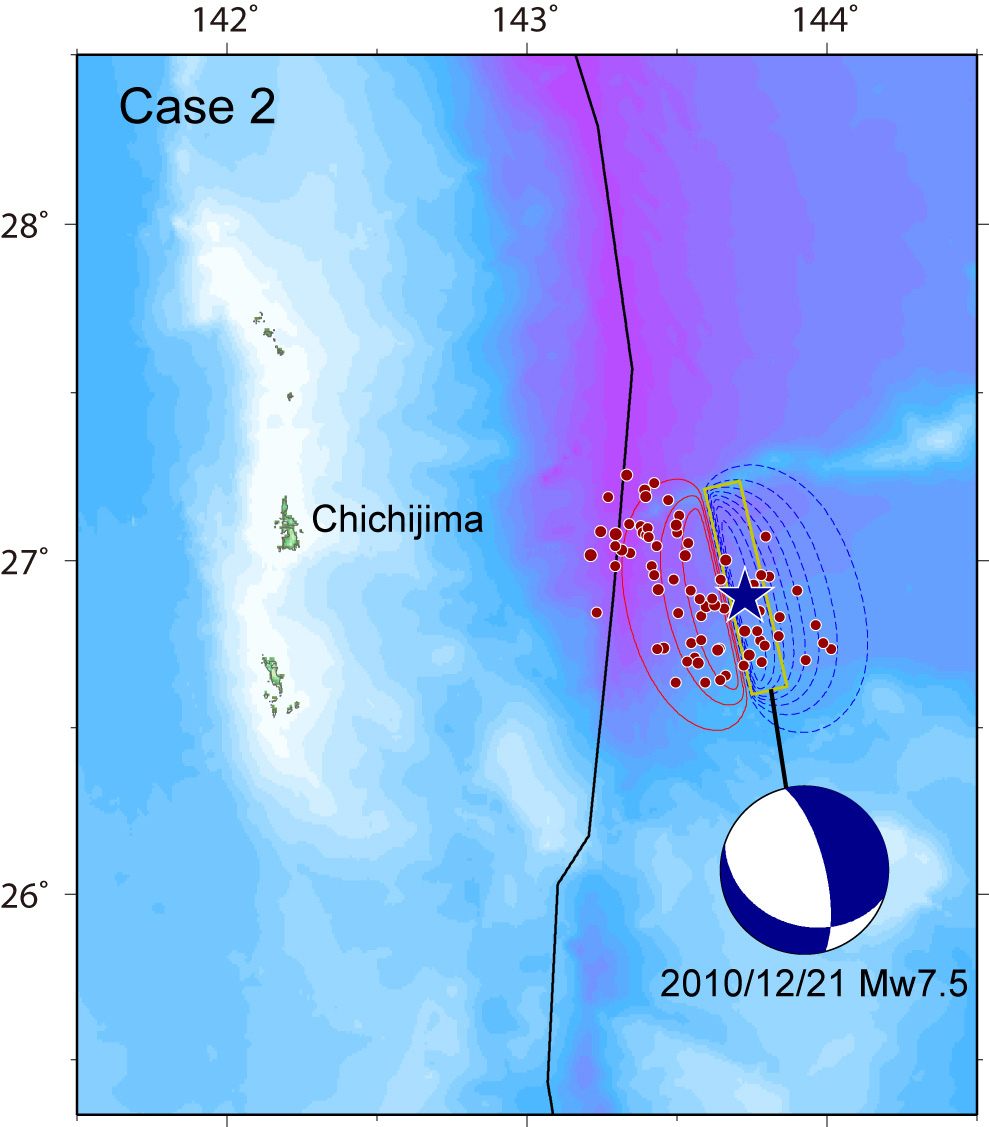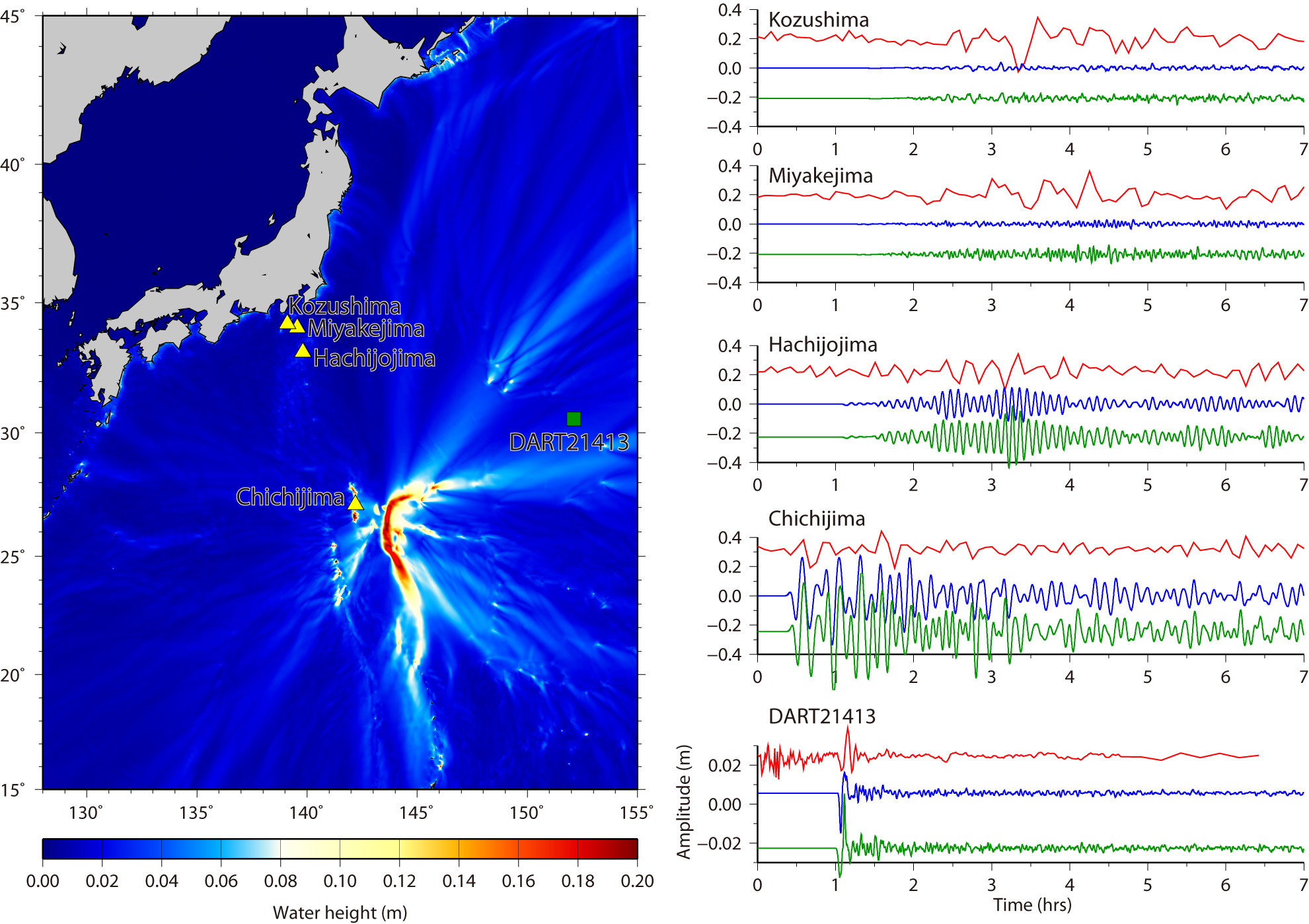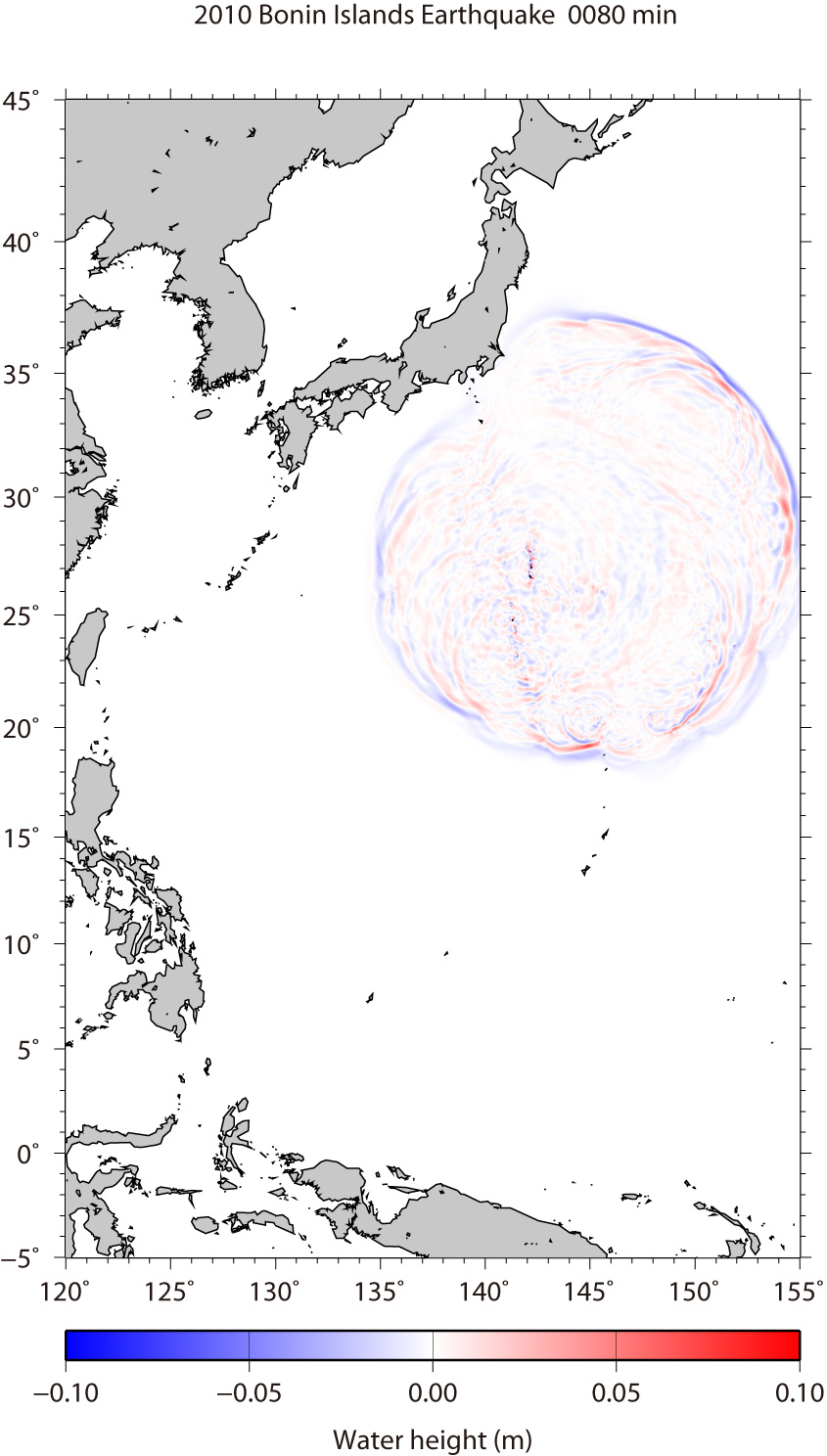| Bonin Islands Tsunami on December 21, 2010 |
We have simulated the tsunamis generated from the Bonin Islands earthquake ( 26.892°N, 143.726°E, Mw=7.4 at 17:19:40 UTC, from USGS ) on December 21, 2010. The assumed tsunami sources cover the aftershock area during one day after the mainshock (Fig. 1). The fault sizes and average slips are 70 km × 35 km and 1 m, respectively, for the both cases. Top depths of the faults are 3 km. The focal mechanism are strike=108º, dip angle=34º and slip angle=-143º for the Case 1, and strike=347º, dip angle=70º and slip angle=-61º for the Case 2 from the USGS's WPhase Moment Tensor solution. As the initial condition for tsunami, static deformation of the seafloor is calculated for a rectangular fault model [Okada, 1985] using the source model. We used a 30" grid interval bathymetry data from GEBCO_08 . To calculate tsunami propagation, the linear shallow-water, or long-wave, equations were numerically solved by finite-difference method [Satake, 1995]. The maximum heights of simulated tsunami indicate that the tsunami energy is concentrating to directions perpendicular to the strike of fault (Fig. 2). We have downloaded the tide gauge and DART data from JCG's and NOAA's websites and compared the simulated tsunami waveforms and observed ones (Fig. 2). We can see the tsunami propagation to the coast of Japan (Fig. 3).


Fig.1 Tsunami Source Models
The red contours indicate uplift, while the blue contours indicate subsidence with the contour interval of 0.1 m.

Fig.2 Maximum Height of Computed Tsunami (Case 1)
Solid line in red indicates the observed tsunami waveforms. Solid lines in blue and green indicate the synthtic ones for Case 1 and Case 2, respectively.

Fig.3 Tsunami Propagation (Click to start animation)
The red color means that the water surface is higher than normal sea level, while the blue means lower.
| by Yushiro Fujii (IISEE, BRI) and Kenji Satake (ERI, Univ. of Tokyo) |
|
|
| References |
|
Okada, Y. (1985), Surface Deformation Due to Shear and Tensile Faults in a Half-Space, Bull. Seismol. Soc. Am., 75, 1135-1154. Satake, K. (1995), Linear and Nonlinear Computations of the 1992 Nicaragua Earthquake Tsunami, Pure and Appl. Geophys., 144, 455-470. |
Last Updated on 2010/12/23